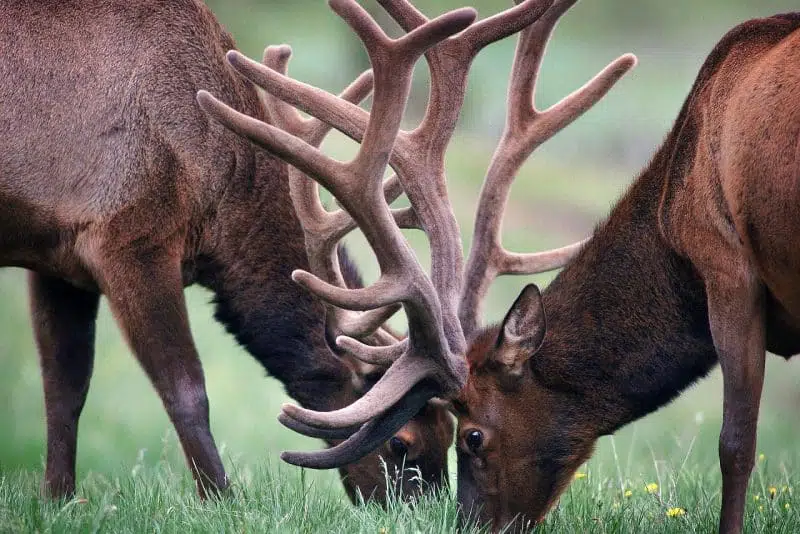Embark on an exhilarating expedition into the enchanting world of “Animals that Start with E”! For those with a curiosity for creatures whose names begin with the exciting letter ‘E’, your search ends here.
Overview of animals that start with E
1. Earthworm
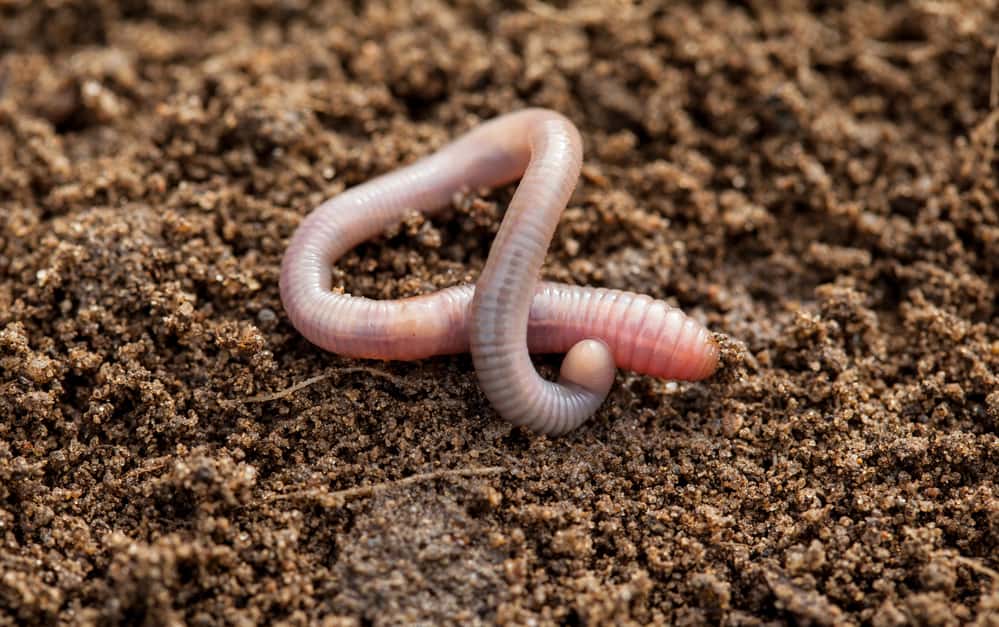
| Scientific Name | Lumbricina |
| Where It Lives | Africa, Asia, Central, South and North America, Europe, Euroasia, Oceania |
| What It Eats | Bacteria, nematodes and protozoans |
| Conservation Status | Least Concern (LC) according to the IUCN Red List |
Fun Fact: Earthworms have both male and female organs
The Earthworm is found in almost all soil across the globe, as long as the soil has sufficient moisture and organic matter to sustain them.
These invertebrates have long, segmented bodies in which some of their organs are duplicated. Although earthworms cannot see or hear, they are sensitive to vibrations and light that help them orientate themselves in soil. Their bodies push and contract through the earth, aerating the soil that promotes soil drainage. These tiny worms play a big part in soil fertility as they help speed up the decomposition of organic matter and help produce nutritive materials for plant growth.
2. Earwig
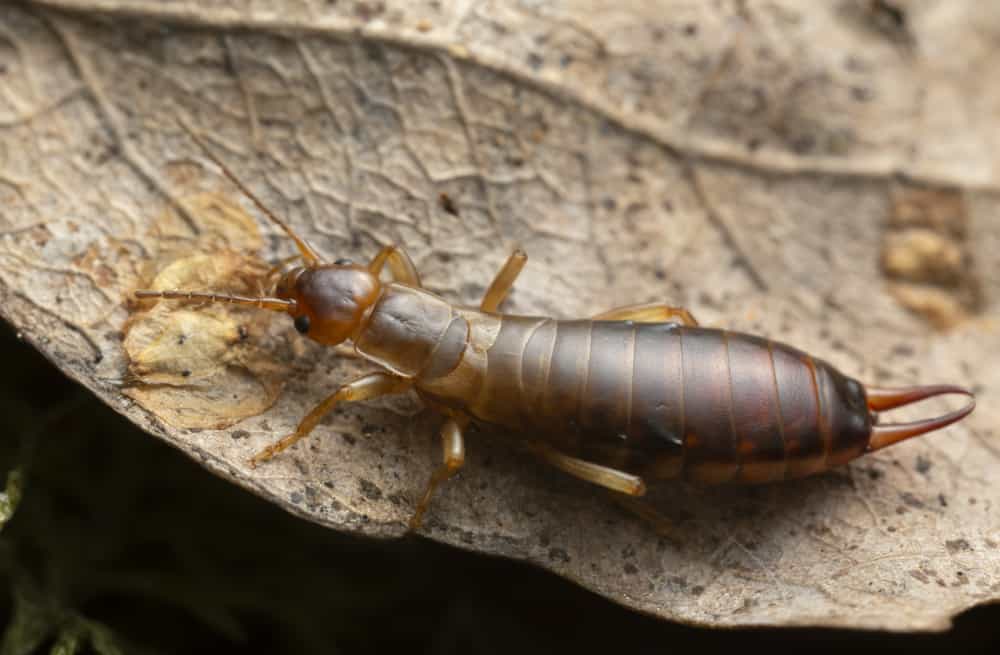
| Scientific Name | Dermaptera |
| Where It Lives | United States, Europe, Asia |
| What It Eats | Plant matter and insects |
| Conservation Status | Not Endangered |
Fun Fact: Contrary to popular belief, earwigs don’t reside in the ears of other animals or humans.
Earwigs live underground, under stones, and in decomposing wood across the globe, except in Antarctica.
Earwigs are peculiar animals with flat bodies and forceps that project from their abdomen called pincers. These scavenging insects feed on plant matter and even dead or injured insects. These tiny insects prefer to hide in moist nooks and crannies during the day and are active during the night. Crop, foilage, and flower damage are often blamed on these critters due to their love for any plant material. Although earwigs have pinchers, they cause little to no harm to humans.
3. Eagle
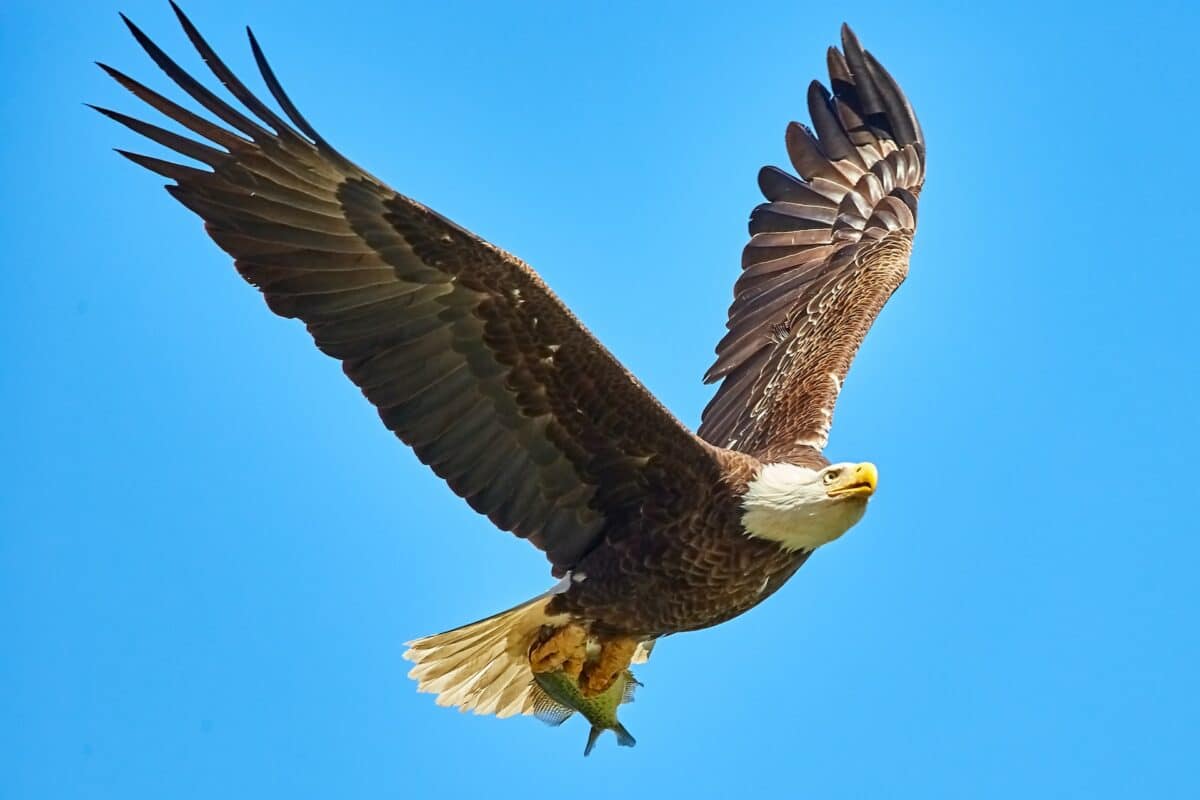
| Scientific Name | Accipitridae |
| Where It Lives | Africa, Asia, Americas, Europe, Asia |
| What It Eats | Fish and small mammals |
| Conservation Status | Many eagle species are Endangered, Vulnerable, or Critically Endangered. However, some are marked as Least Concern according to the IUCN Red List. |
Fun Fact: The bald eagle has a ten times stronger grip than a human.
There are over 50 powerfully built eagle species that can be seen across the globe in places like Africa, Asia, Central America, Europe, Eurasia, North America, and South America.
These majestic birds have impressive flying agility and speeds that contradict their gigantic size. These predators have large and heavy beaks, and big feet with strong talons which they often use to grab their live prey. Due to their powerful flight and strength, eagles have been associated as symbols of imperial power and war since Babylonian times. These impressive predators mate for life and return to the same nest to lay their eggs each year.
4. Eastern Bluebird
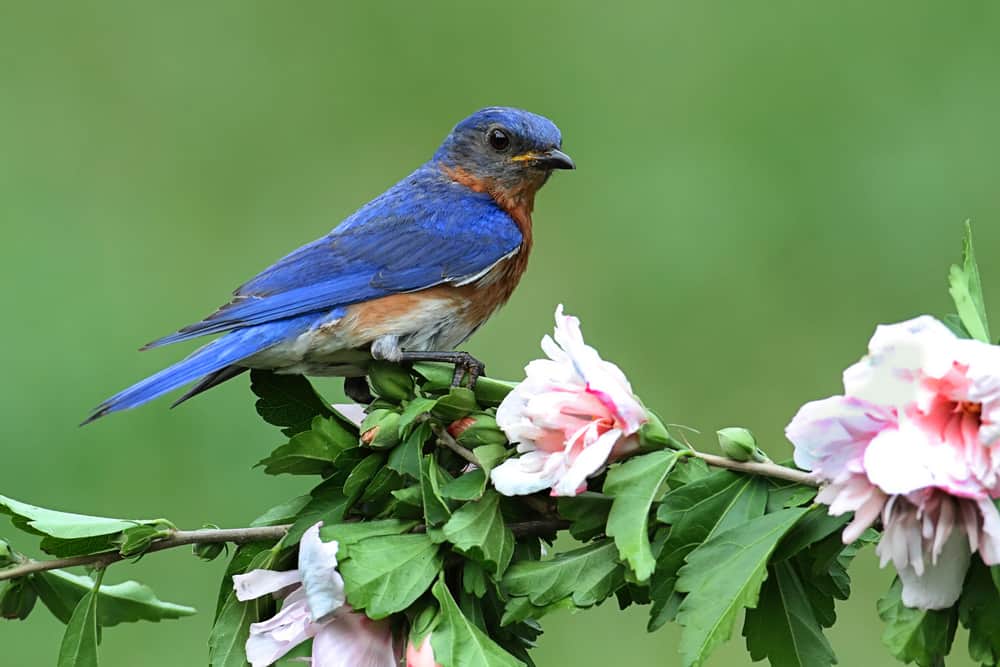
| Scientific Name | Sialia sialis |
| Where It Lives | North and Central America |
| What It Eats | Fruit, berries and insects |
| Conservation Status | Least Concern (LC) according to the IUCN Red List |
Fun Fact: The Eastern bluebird’s blue coloration is only a trick of the light and they are not blue-colored.
The Eastern bluebird is a migratory species that lives in woodlands, farmlands, and orchards across North and Central America. With the more northern groups migrating to the south during winter, and the southern groups staying in their breeding grounds all year.
These beautiful birds are extremely social animals and will often be seen in flocks of over a hundred. Being very territorial Eastern bluebirds will defend their nesting and feeding grounds, chasing invaders at high speeds or even fighting with their feet and hitting opponents with their wings! The Eastern Bluebird’s song is one of its most impressive characteristics and the male will sing almost 1000 songs per hour to attract a mate.
5. Eastern Coral Snake
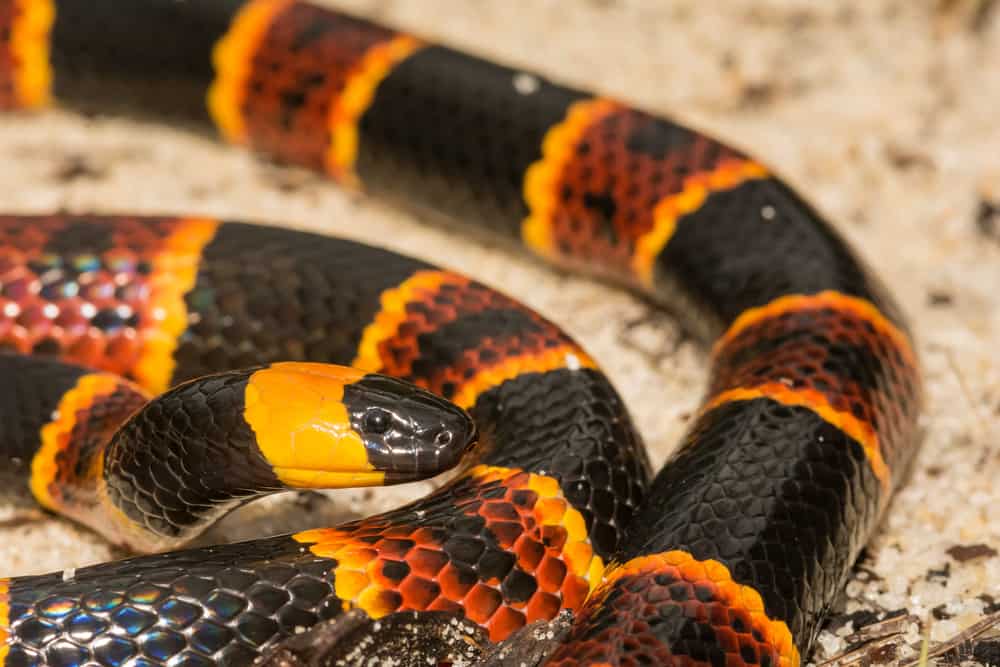
| Scientific Name | Micrurus fulvius |
| Where It Lives | United States and Mexico |
| What It Eats | Lizards, frogs and other snakes |
| Conservation Status | Least Concern (LC) according to the IUCN Red List |
Fun Fact: The Eastern coral snake’s venom contains neurotoxins that are detrimental to nerve tissue.
The Eastern coral snake, with their distinctive rings of white, red, black, and yellow, is a reptile indigenous to the Southeastern United States.
These highly venomous snakes are very secretive and live solitary lives. They spend their days hunting on the ground and their evenings in their burrows. Like other snakes Eastern coral snakes hibernate during the winter months. Even though these snakes’ venom holds a powerful neurotoxin that causes paralysis and respiratory failure in prey, they are reluctant to bite. However, this does not mean one should not be careful, as one Eastern coral snake holds enough venom to kill five human adults.
6. Eastern Gorilla
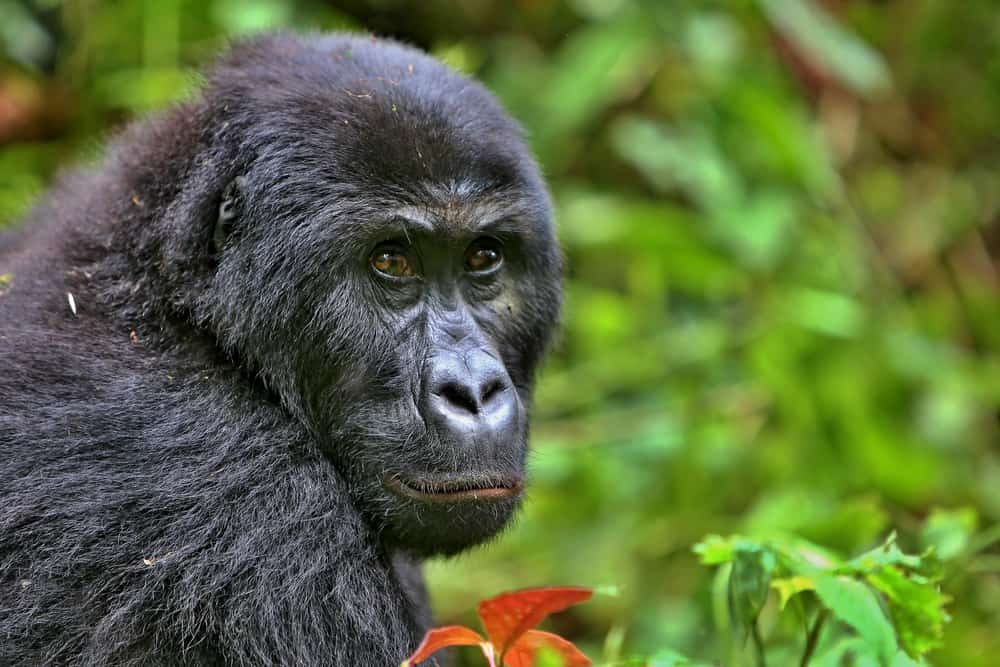
| Scientific Name | Gorilla beringei |
| Where It Lives | Sub-Saharan Africa |
| What It Eats | Roots, stems, leaves, vines, bamboo, berries, fruit |
| Conservation Status | Critically endangered (CR) according to the IUCN Red List |
Fun Fact: Like humans, they have five fingers on each hand and five toes on each foot.
The Eastern gorilla, who are the largest living primates, is critically endangered and is native to Uganda, Rwanda, and the Democratic Republic of the Congo.
These human-like primates live in groups called harems, where males, females, and young all gather. They rest in nests on the ground, on steep slopes, or in trees. These stunning animals are very gentle and calm, forming strong bonds with each other. It is not uncommon to find them grooming one other. Eastern gorillas mate year-round and their pregnancies last just over 8 months. Infants are cared for by their mothers, as they can only crawl at 9 weeks and start walking between 30 – 40 weeks.
7. Eastern Phoebe
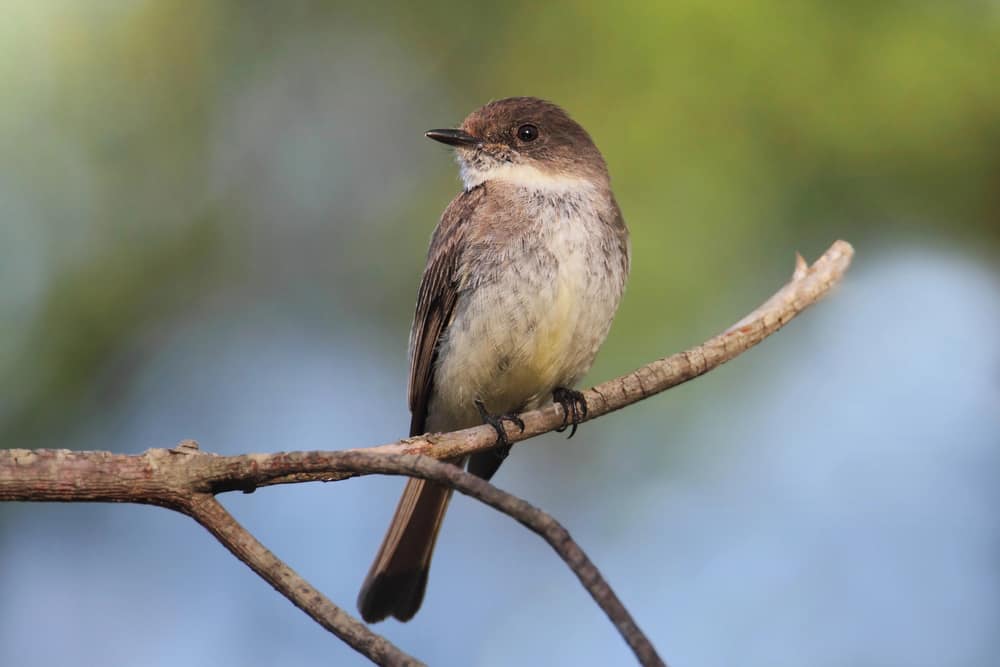
| Scientific Name | Sayornis phoebe |
| Where It Lives | Native to North America |
| What It Eats | Insects, some berries |
| Conservation Status | Least Concern (LC) according to the IUCN Red List |
Fun Fact: While they are exceptionally friendly species, they prefer their own company.
The Eastern phoebe lives in farmland, woodland and suburbs close to the water in Northern America. These migratory birds breed in east North America and spend winters in South and Central America.
These solitary birds spend most of their time on their own, except in breeding seasons. During this time they form monogamous breeding pairs and both parents care for their young until they are 16 days old. They are a very territorial species and the males will often use vocalizations to claim their territory. Eastern Phoebes have large heads, which appear even larger when they puff up their small crests!
8. Echidna
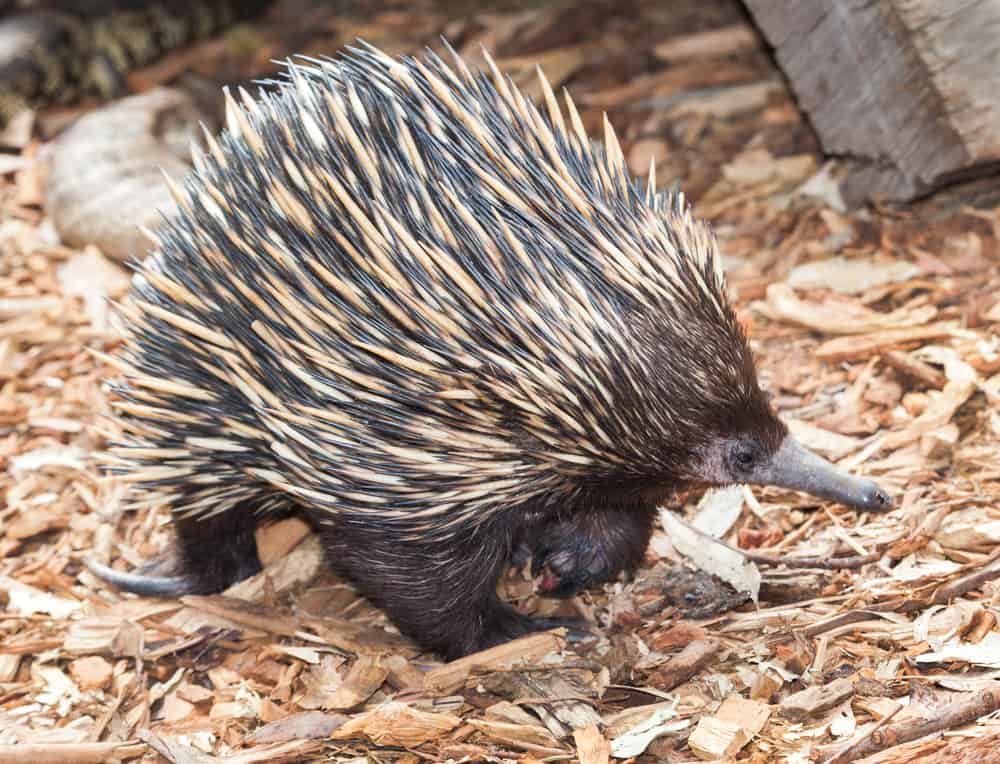
| Scientific Name | Zaglossus bartoni |
| Where It Lives | New Guinea |
| What It Eats | Insects and earthworms |
| Conservation Status | Vulnerable (VU) according to the IUCN Red List |
Fun Fact: Echidnas and Platypus are the only mammals in the world that lay eggs.
The eastern long-beaked echidna is one of three echidna species that live in New Guinea, where they live in underground burrows or dense vegetation.
Eastern long-beaked echidnas live solitary lives where they spend their evenings foraging for food. they use their claws to tear open logs to find invertebrae. These animals do not have teeth, but instead, grind their food in the back of their mouth with a horny plate. Eastern long-beaked enchidas are listed as vulnerable on the IUCN Red List, with humans hunting them being a main contributor to their declining numbers.
9. Edible Frog
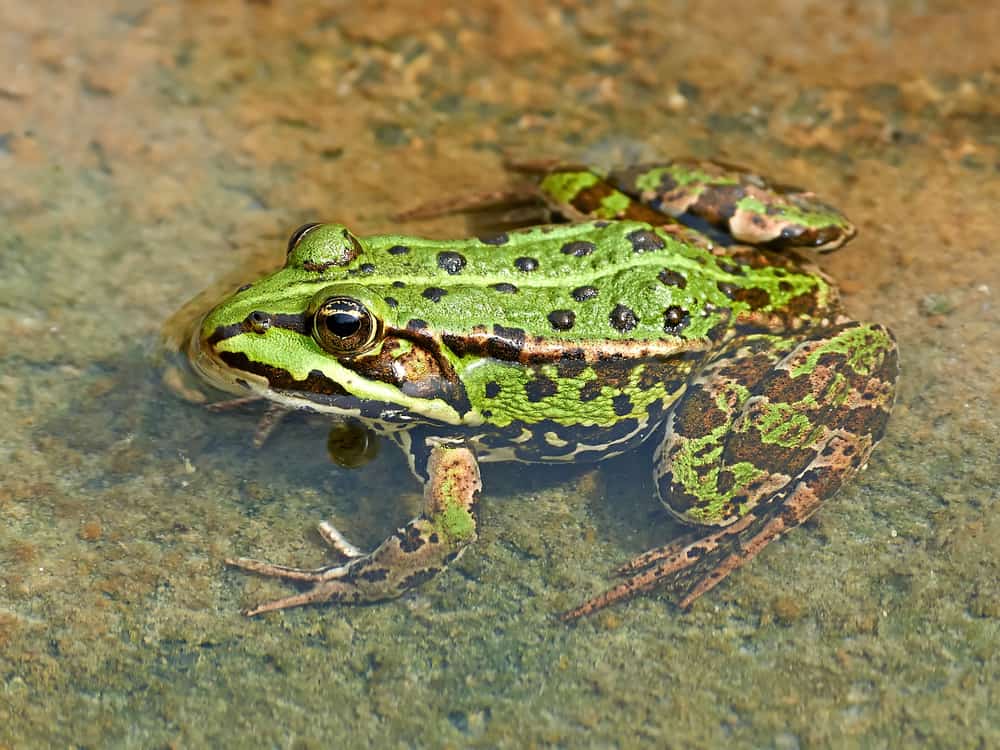
| Scientific Name | Pelophylax kl. esculentus |
| Where It Lives | Europe |
| What It Eats | Insects |
| Conservation Status | Least Concern (LC) according to the IUCN Red List |
Fun Fact: Edible frogs mostly live in aquatic environments
The edible frog, also called the Common Water Frog or the Green Frog, is a frog species indigenous to Europe. They are hybrid frogs that stem from two other European frogs. The Pool Frog and the Marsh Frog.
The Edible frog is one of the species that can reproduce by hybridogenesis. Here one parent (normally the mother) mates with another species to produce a hybrid. However, this hybrid species only has the genetic material from one parent and reproduces asexually. The edible frog is also eaten as a delicacy in France, known as frog legs.
10. Egret
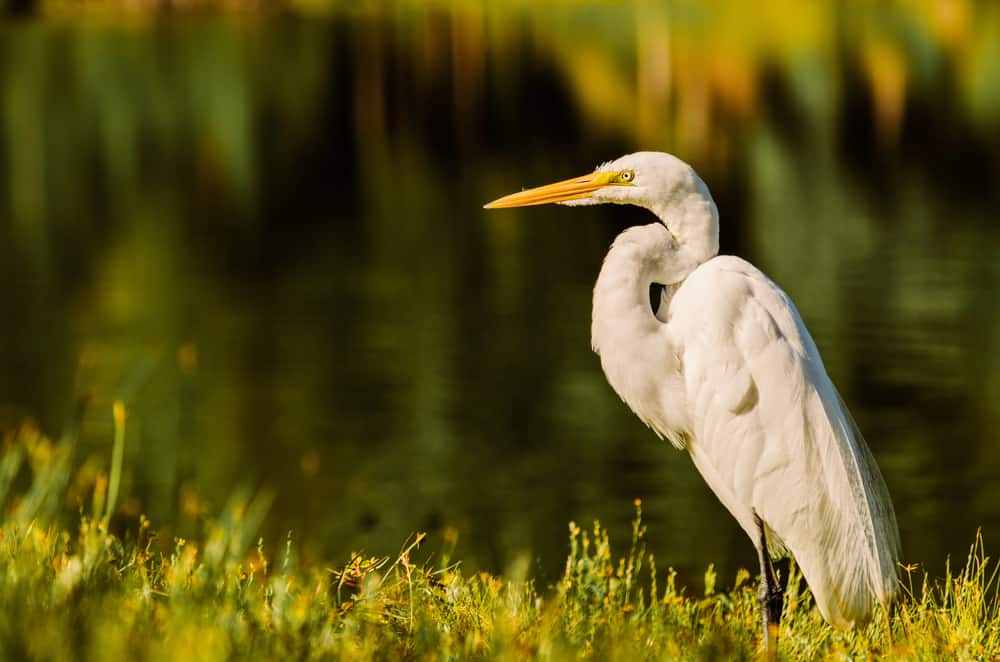
| Scientific Name | Ardeidae |
| Where It Lives | Asia, Africa, Europe, America, Oceania |
| What It Eats | Fish and other aquatic animals |
| Conservation Status | Least Concern (LC) according to the IUCN Red List |
Fun Fact: The oldest great egret ever recorded was 22 years and 10 months old!
The Egret, part of the heron family, lives in wetlands and wooded swamps across the globe, but avoids colder and arid regions.
These stunning birds have exceptionally long necks – longer than their body length – which fold into an “S” shape. These long-legged birds feed in shallow waters, walking slowly while they scout for food. And once spotted they will quickly snap up their prey with their bills. Like many other birds, egrets are aggressive when it comes to feeding – some parents will even fight with their young over food!
11. European Eel
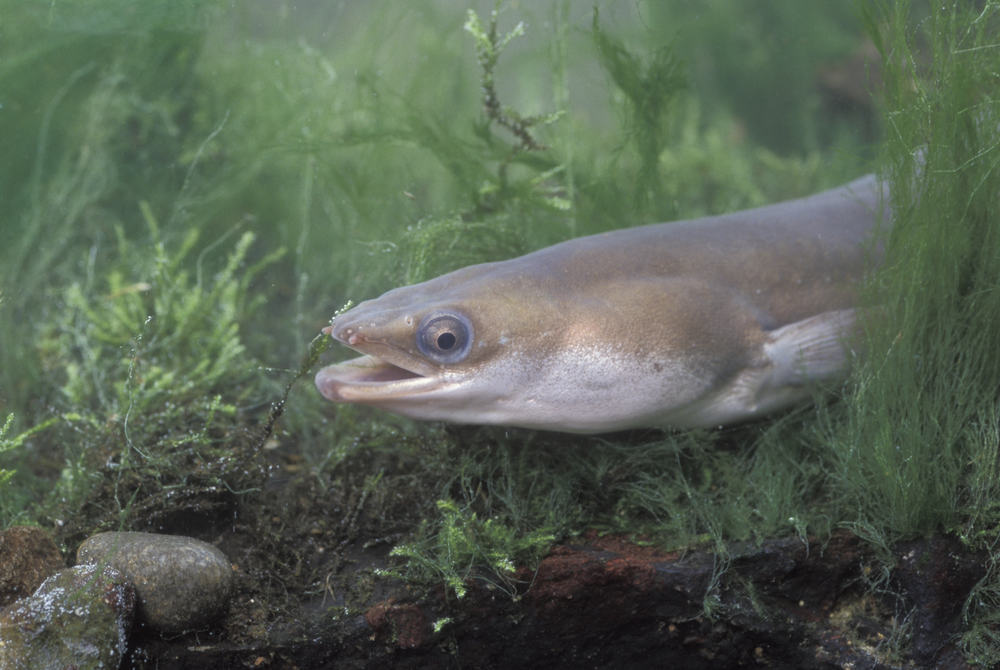
| Scientific Name | Anguilla anguilla |
| Where It Lives | English Channel, Mediterranean Sea, North Atlantic, Baltic and North Seas |
| What It Eats | Fish, eggs, fauna, invertebrae |
| Conservation Status | Critically Endangered (CR) according to the IUCN Red List |
Fun Fact: The eel fishes can swim backward.
The European eel, just one of the many eel species, is found in freshwater, marine and brackish waters in and around Europe.
These slimy, snake-like fish breed only once during their whole lifetime! And once the female eel’s eggs spawn, she dies. This also means that the newborn eels are independent from birth, with the only care they receive from their parents is enough nutrients as eggs. European eels navigate their environments through taste. Throughout different live stages, eels feed on different sources ranging from insects to plants to carrion. The European eel is currently marked as critically endangered due to overfishing for human consumption.
12. Eider
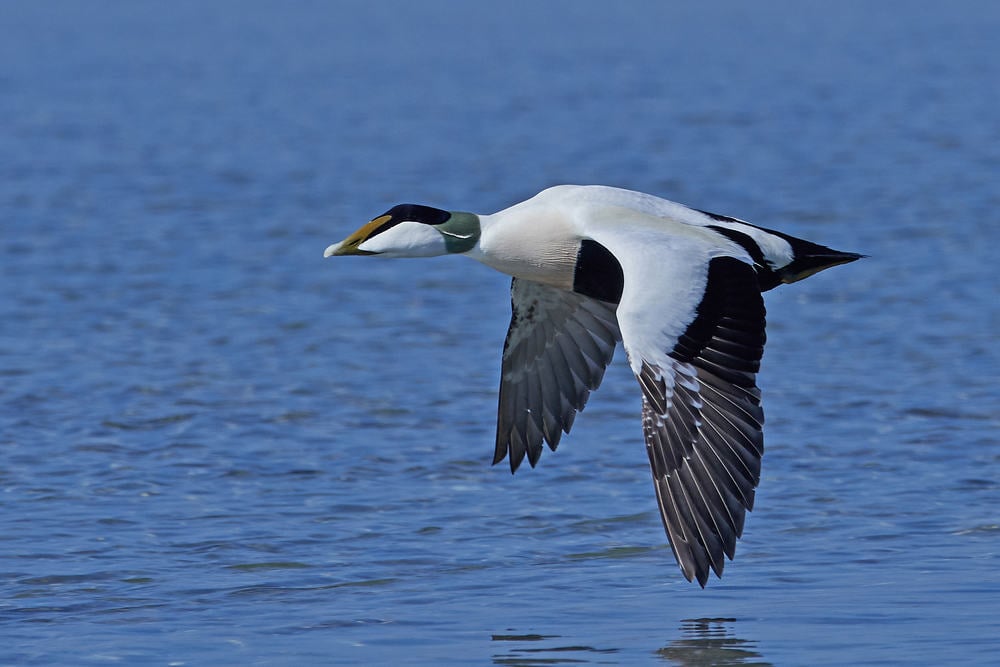
| Scientific Name | Somateria |
| Where It Lives | Northern Europe, North America and Siberia |
| What It Eats | Fish eggs, mollusks, crustaceans, echinoderms, and marine worms |
| Conservation Status | Least Concern (LC) according to the IUCN Red List |
Fun Fact: The female eider plucks her feathers to create a lining for her nest.
Eiders are large-sized sea ducks, with three species in the family, who all breed in the colder temperatures of the Northern Hemisphere.
These birds have dense feathers that help them keep warm in the cold climates of the Northern Hemisphere. These down feathers are also commonly used by humans to make clothing and bedding. Eiders live in large flocks that feed during the day. Their feeding sessions normally last about half an hour, where after they would move to land so that they can digest their food before having to take flight again.
13. Egyptian Mau
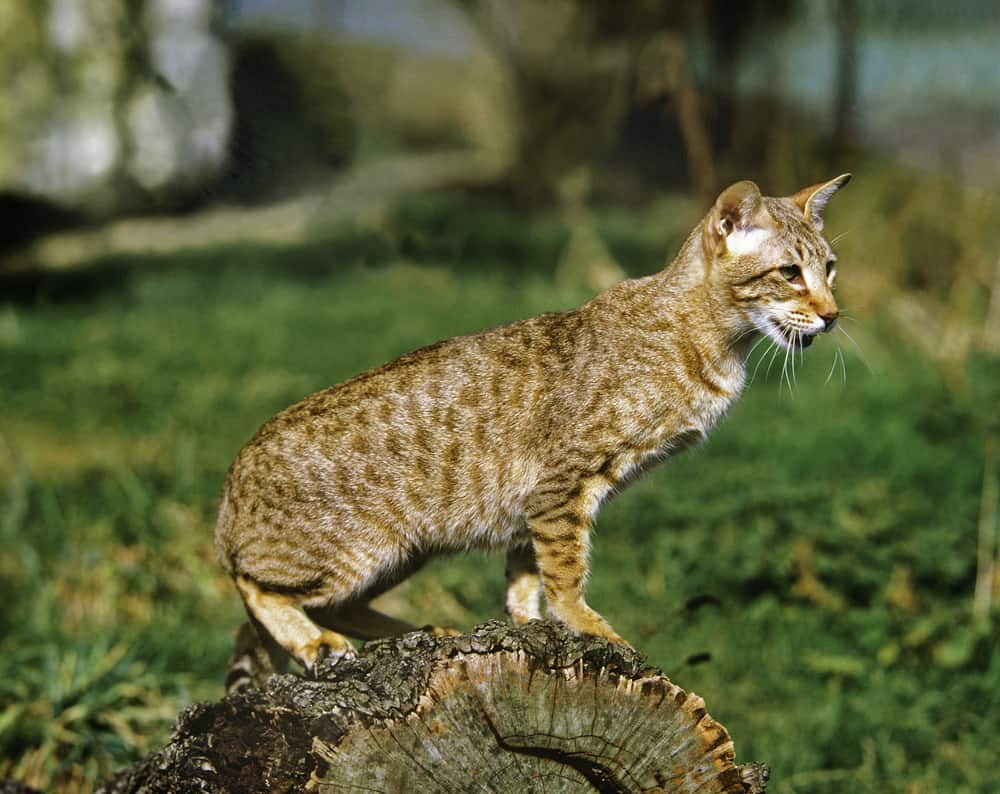
| Scientific Name | Felis catus |
| Where It Lives | Origin in Egypt but seen worldwide |
| What It Eats | High quality cat food and animal protein |
| Conservation Status | Not Listed |
Fun Fact: These species of cats are extremely rare and only the mixed breeds are easily found outside of Egypt.
The gorgeous Egyptian Mau is an ancient domestic cat breed that finds its origin in Egypt. However, these days they are found worldwide in homes as pets.
This breed is the only naturally spotted cat breed. These friendly, playful, energetic, and regal cats make for special pets. However, if you are looking for a cuddle buddy, these cats will not do it! They prefer having all four feet on the ground and not to be held. Egyptian Mau’s are descendants of the African wild cat and have long muscular builds that are incredibly fast. They can run at speeds of 30 mph!
14. Eland
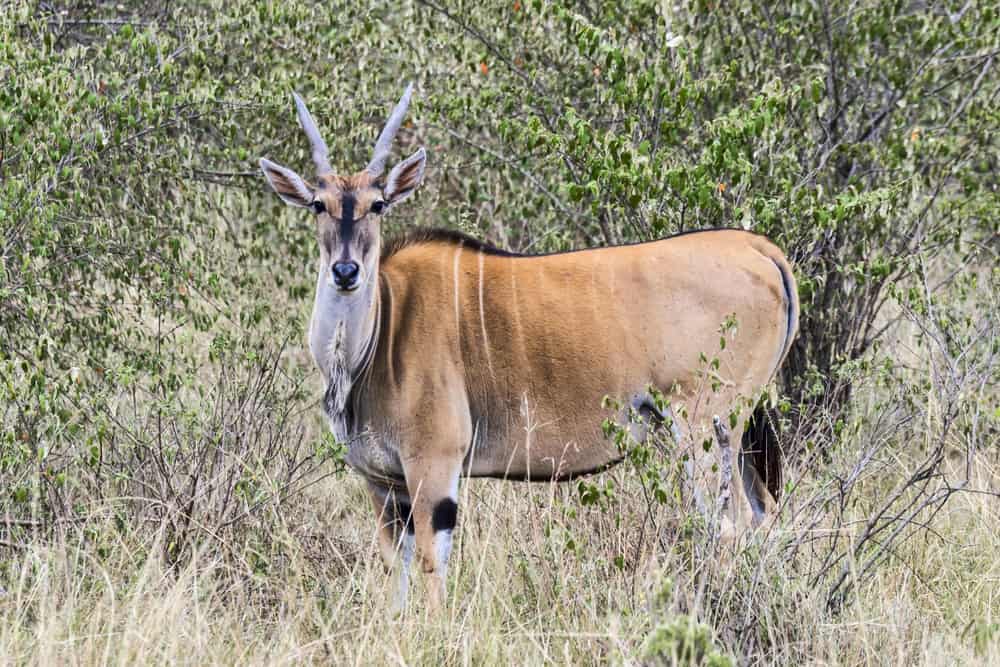
| Scientific Name | Taurotragus oryx |
| Where It Lives | East and Southern Africa |
| What It Eats | Grasses, leaves, shrubs |
| Conservation Status | Least Concern (LC) according to the IUCN Red List |
Fun Fact: Elands are the slowest antelopes in the world!
The Eland lives in semi-arid regions with shrub-like bushes, woodlands and mountain areas across Sub-Saharan Africa.
One of the most distinctive features of Elands is their spiral horns. The males typically have shorter and wider horns than females and use them to wrestle and headbut rivals. Females have longer and more tightly spiraled horns which they use to fend off predators attacking their young. These social animals are often seen feeding during the night and escaping the heat of the day by resting in the shade. These animals are not territorial, but males will fight during the breeding season. A wonderful experience is also hearing an Eland bark, they do this to warn each other of danger.
15. Electric Eel
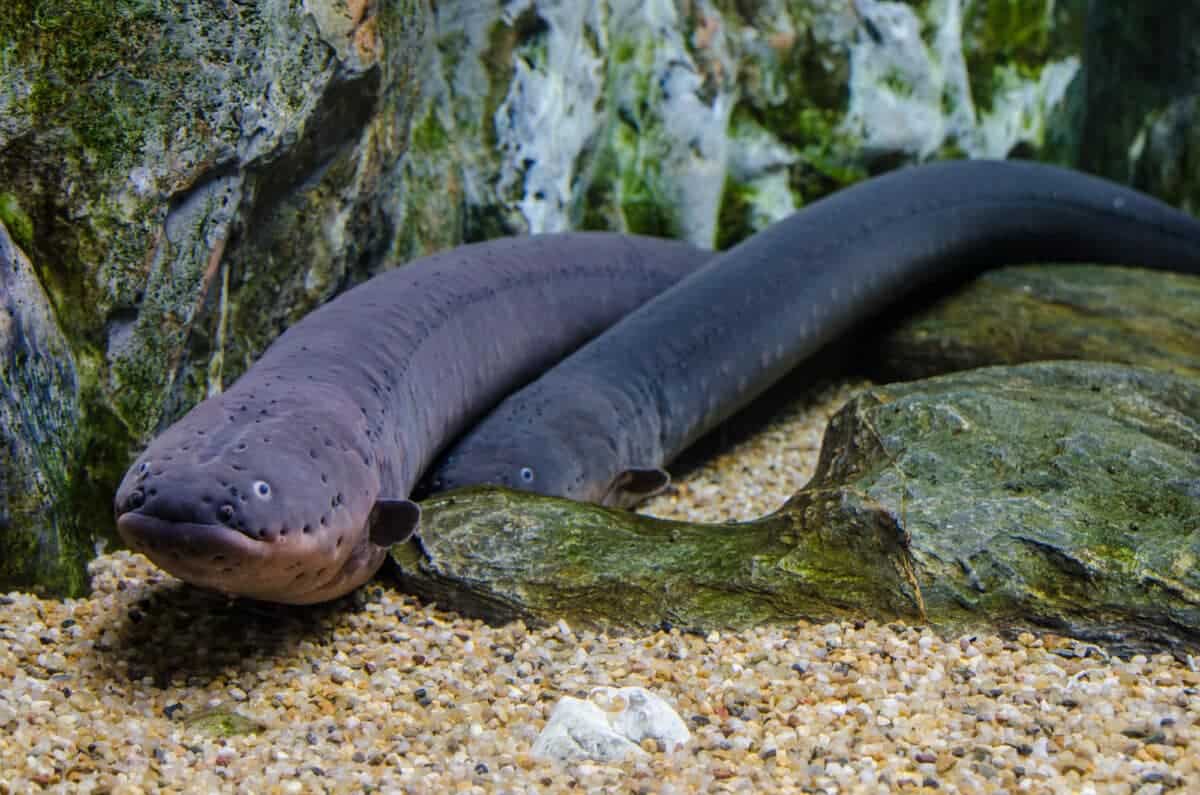
| Scientific Name | Electrophorus electricus |
| Where It Lives | South America |
| What It Eats | Insects, fish, small vertebrae and crustaceans |
| Conservation Status | Least Concern (LC) according to the IUCN Red List |
Fun Fact: Despite their remarkable shocking abilities, they have poor vision.
Although called an eel, the electric eel is actually a freshwater fish that mostly lives in the Amazon.
With their incredible ability to produce 600 volts of electricity, they stun their prey or defend themselves. This knifefish species is believed to stun its prey to protect its sensitive mouth from struggling fish and their spines. The fish are stunned long enough for the electric eel to slurp them up straight to their stomachs! Electric eels have a snake-like appearance with their long bodies growing to 8 feet and their scaleless, slimy skin.
16. Eleonora’s Falcon
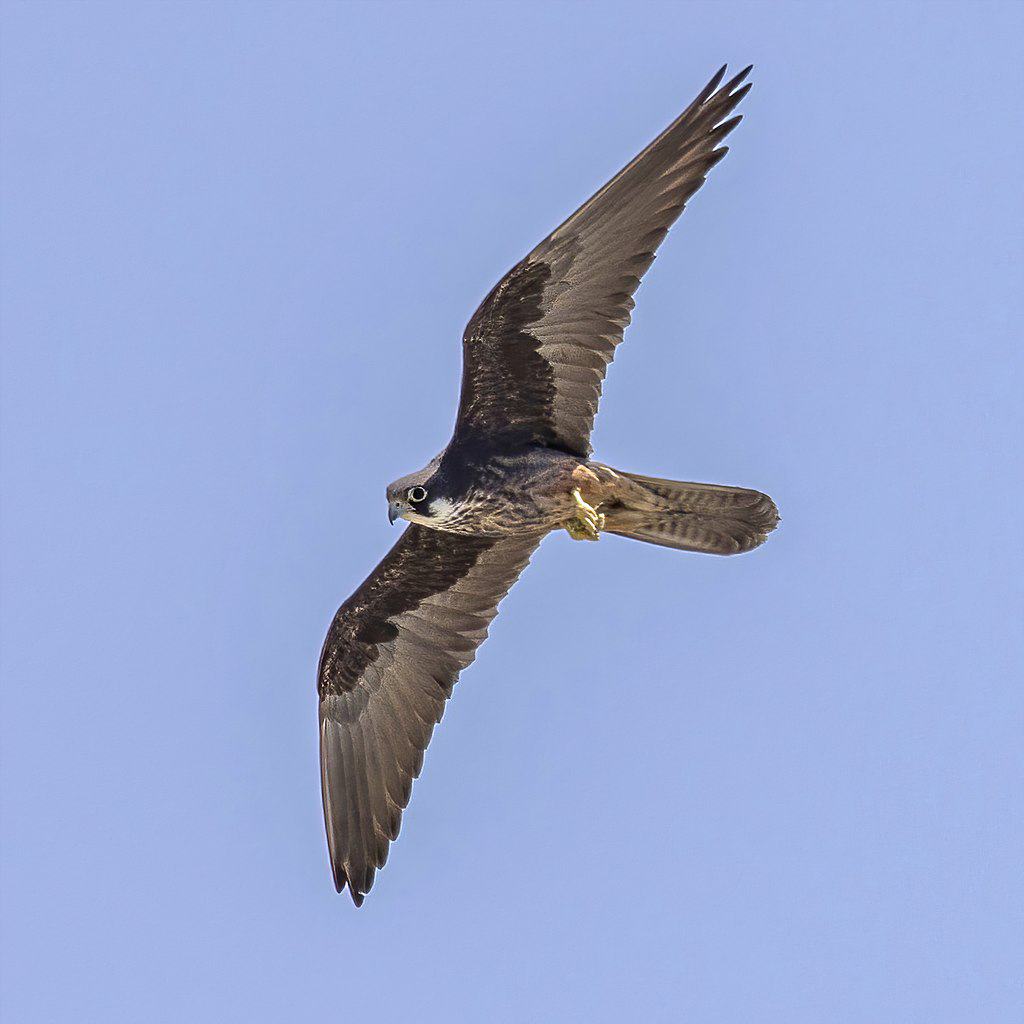
| Scientific Name | Falco eleonorae |
| Where It Lives | Canaries, Mediterranean Islands and north Africa |
| What It Eats | Larger insects and small birds |
| Conservation Status | Least Concern (LC) according to the IUCN Red List |
Fun Fact: They are one of few falcon species that create breeding colonies.
Eleonora’s falcon is a medium-sized raptor found in two habitats, they breed along the coasts of Southern Europe during summer and migrate to Africa during winter.
These raptors build their nests in small caves, on the ground, or on cliff edges close to other Eleonora Falcons’ nests. The female falcon incubates the eggs for about thirty-three days, whereafter the male feeds the young after hatching. The young falcons are ready to leave the nest after about four to five weeks. These falcons are fast and agile and target their prey from the air, often eating large insects midflight. Larger prey is often stored in a larder and shared with others, especially their young.
17. Elephant
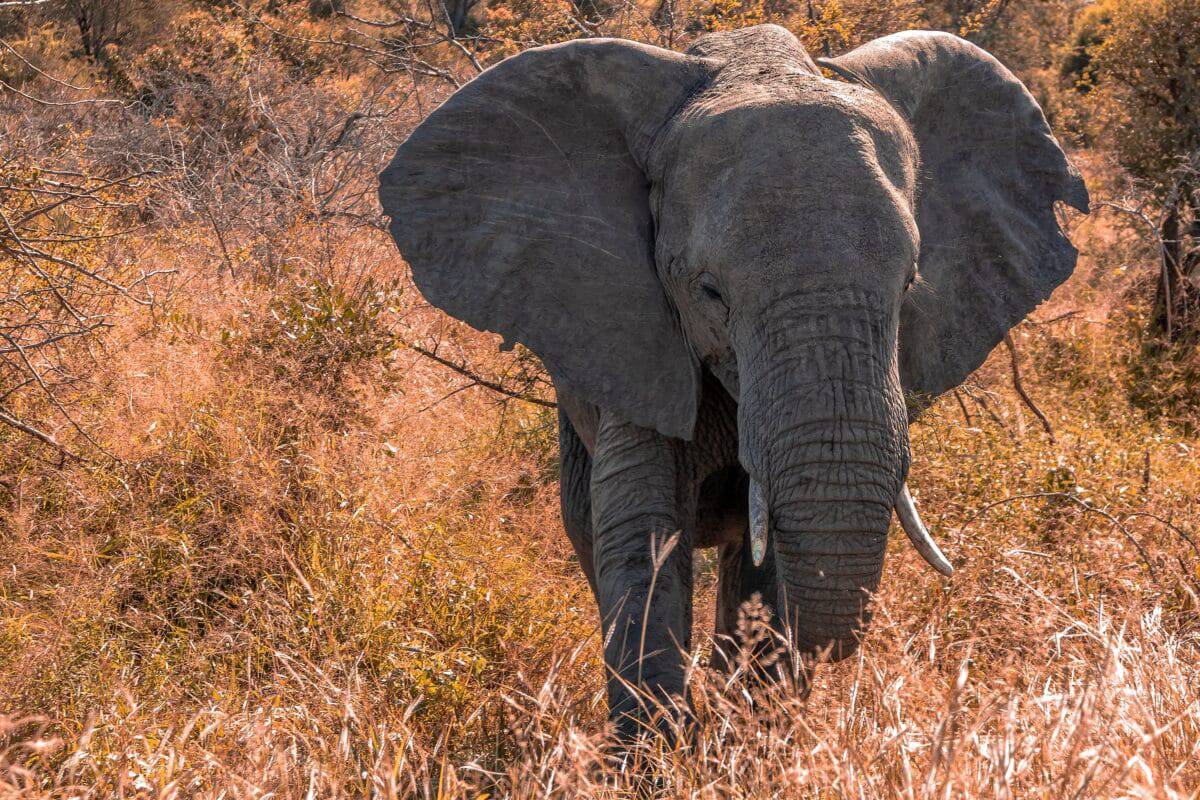
| Scientific Name | Loxodonta |
| Where It Lives | Africa and Asia |
| What It Eats | Grasses, shrubs, leaves, roots and fruit. |
| Conservation Status | Endangered (EN) and Critically Endangered (CR) according to the IUCN Red List |
Fun Fact: Elephants’ trunks are strong enough to hold their own body weight!
There are three elephant species recognized today, the African bush elephant, the African forest elephant, and the Asian elephant. These magnificent creatures are mostly distributed between Africa and Asia, where they live in forests, savannahs, marshes, and deserts.
The African bush elephant and the Asian elephant are both endangered species, while the African forest elephant is critically endangered. These large mammals have been hunted and poached for many years due to illegal ivory smuggling, leading to their plummeting numbers. Elephants, as large as they are, have a playful and sensitive nature. It is often seen that elephants mourn the loss of loved ones and aid others who need their help.
18. Elephant Seal
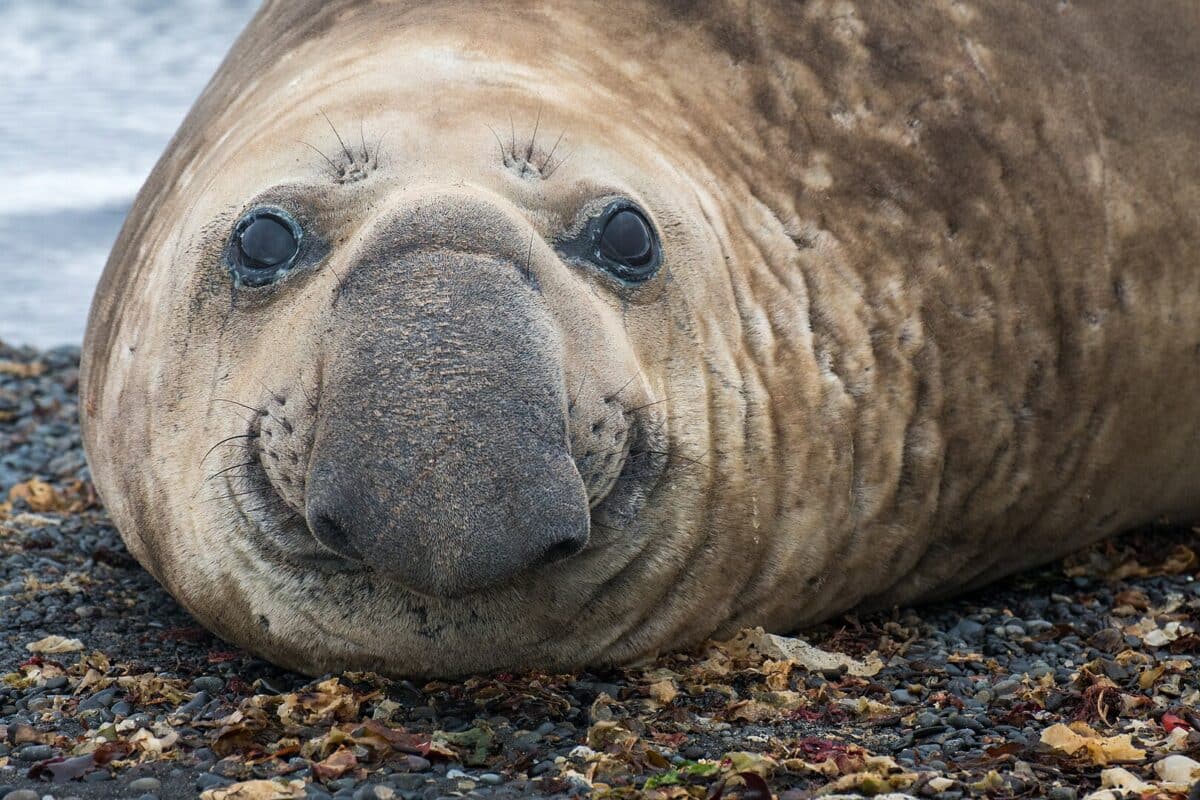
| Scientific Name | Mirounga |
| Where It Lives | Eastern Pacific Ocean and South Atlantic regions |
| What It Eats | Fish, squid, sharks and rays |
| Conservation Status | Least Concern (LC) according to the IUCN Red List |
Fun Fact: Elephant seals can weigh up to 8,800 pounds!
There are two elephant seal species, the northern elephant seal and the southern elephant seal, which can be found in the Eastern Pacific Ocean and the South Atlantic respectively.
These massive sea mammals were named after their huge size and the male’s inflatable trunk. Elephant seals have no visible external ears, and their shorter limbs and large hind flippers help them move quickly through the water. However, this makes navigating land a tad more difficult. Luckily these animals spend most of their time underwater in search of food, and can travel as much as 60 miles in a single day!
19. Elk
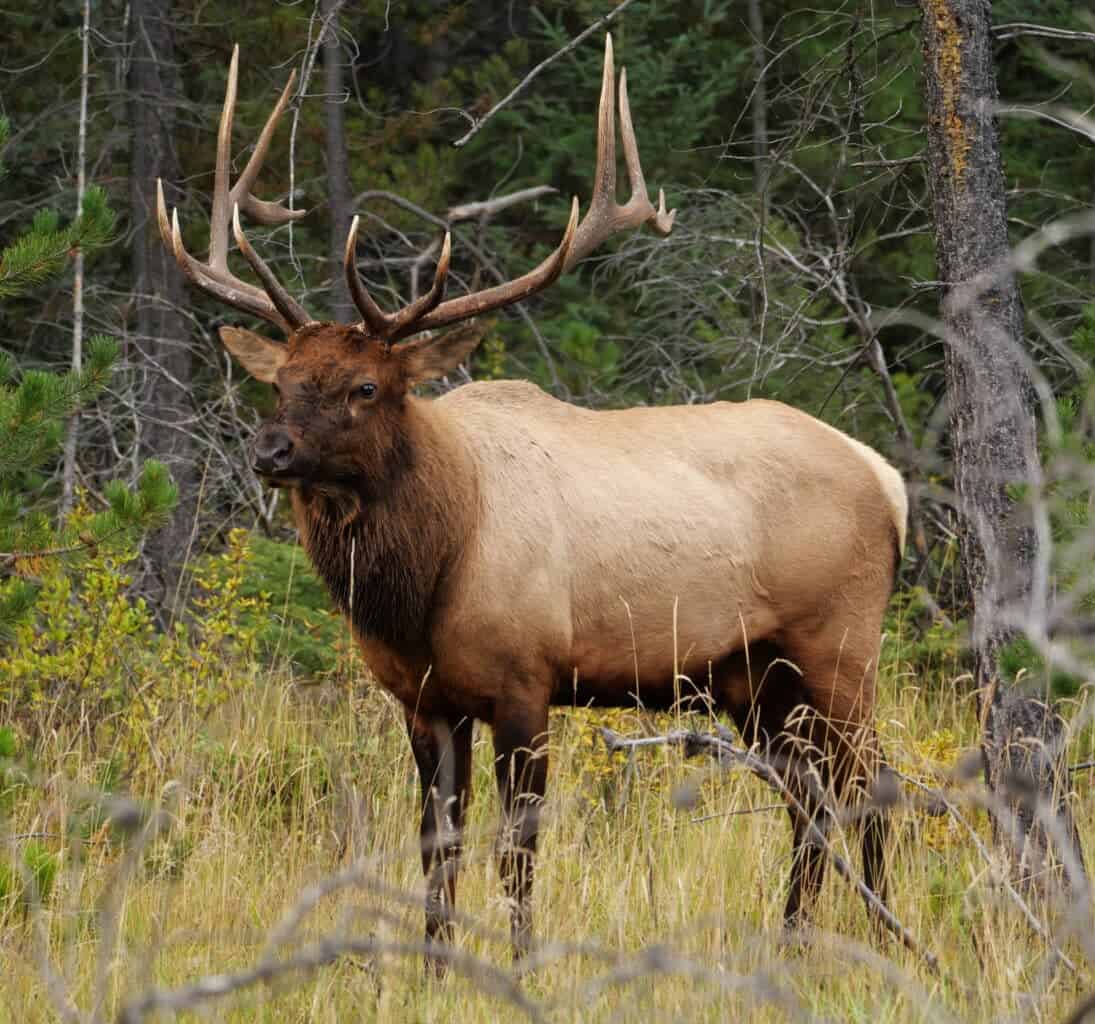
| Scientific Name | Cervus elaphus canadensis |
| Where It Lives | North America and Central Asia |
| What It Eats | Grasses, leaves, plants and bark |
| Conservation Status | Least Concern (LC) according to the IUCN Red List |
Fun Fact: Elks consume about 9.1kg of vegetation daily.
Elks are large herbivores indigenous to North America, Eurasia, and Asia. They are the second-largest herbivores after the moose. There are only four subspecies in existence in the North American region while the Eastern and Merriam’s Easter elk subspecies have become extinct.
Even though Elk are large animals, they are very fast runners, especially over difficult terrains. But despite their speed, their main form of protection against predators is their large social groups. To help them during cold winter climates, elk grow thicker coats during these months, and also pick up more weight!
20. Emperor Penguin
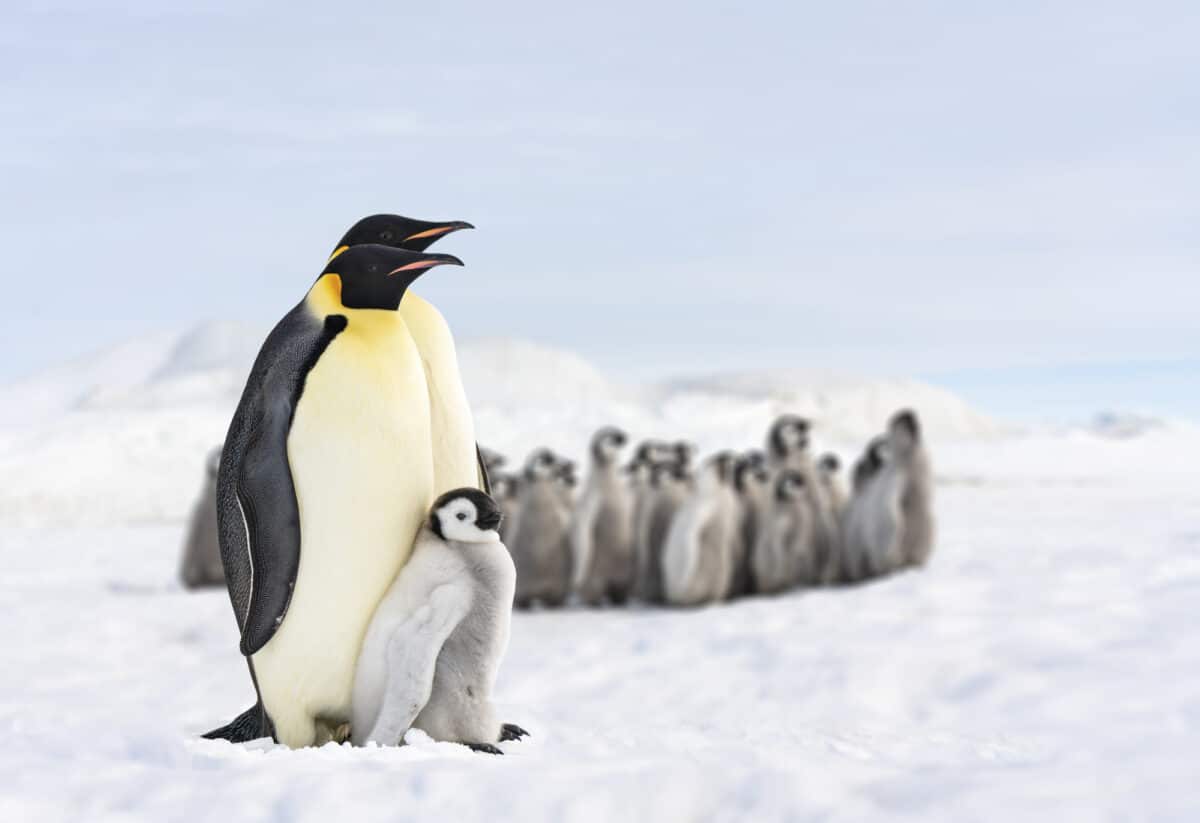
| Scientific Name | Aptenodytes forsteri |
| Where It Lives | Antarctica |
| What It Eats | Krill, crustaceans, fish and squid |
| Conservation Status | Least Concern (LC) according to the IUCN Red List |
Fun Fact: Emperor Penguins can remain underwater for 22 minutes and dive as deep as 1640 feet!
Emperor penguins, the largest of all penguin species, are endemic to Antarctica. Here they live along the coastline and in areas with compacted ice.
These serial monogamous animals breed in colonies in areas where they are protected from the chilly winds close to cliffs and, of course, icebergs. Females lay one egg and leave it with the male while she goes out to sea. Males keep the eggs warm by carrying them on their feet for nine weeks. By the time the eggs hatch, the females are back to care for the hatchlings while the males go and find food. Emperor penguins are excellent swimmers and move on land with a cute waddle or a quick belly slide.
21. Emperor Tamarin
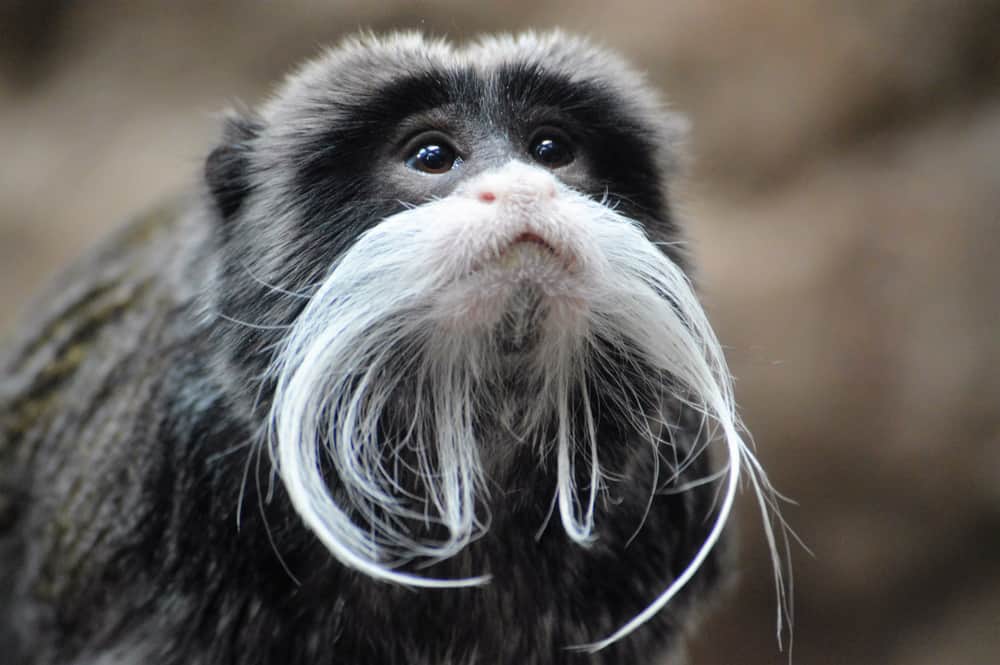
| Scientific Name | Saguinus imperator |
| Where It Lives | South America |
| What It Eats | Nectar, fruits, flowers, frogs, insects and snails |
| Conservation Status | Least Concern (LC) according to the IUCN Red List |
Fun Fact: The emperor Tamarin has a dignified white mustache that mirrors that of German emperor Wilhelm II, hence their name.
Emperor tamarins are a species of small monkeys commonly found in the forests of South America, where they live in tree canopies of tropical rainforests.
These tiny, mustached primates are active during the day and sleep during the evenings. They are very social animals living in groups of about 15. The group sleeps together in treetops and is often seen grooming each other, an act that increases the bonds between individuals in the group. They move quickly from tree to tree with agile leaps, grabbing onto branches with their clawed hands and feet.
22. Emu
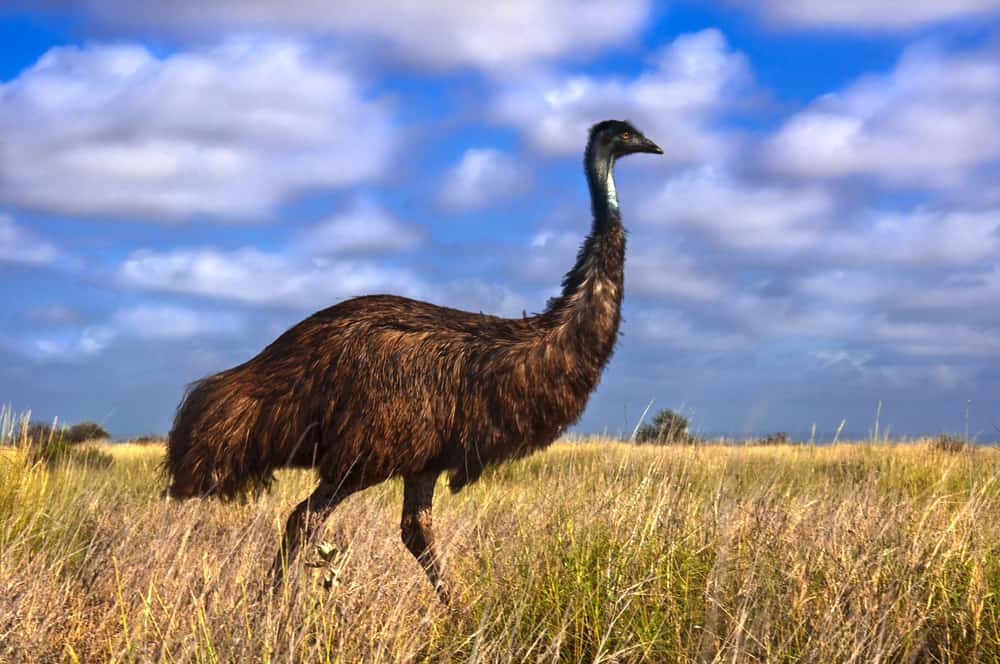
| Scientific Name | Dromaius novaehollandiae |
| Where It Lives | Australia |
| What It Eats | Flowers, seeds, roots and fruits |
| Conservation Status | Least Concern (LC) according to the IUCN Red List |
Fun Fact: Emu’s have two sets of eyelids! One blinks and the other one keeps dust from their eyes.
Emus are only found in Australia, where they live in a wide variety of habitats. Including grasslands, semi-deserts, wooded savannahs, and dry forests.
These birds are the second-largest birds in the world, second to the ostrich. They can reach speeds of 30mph and travel great distances over the country. They are known to swallow small rocks and pebbles to aid their digestion and can go long periods without eating. Although, they have to drink water daily! These are solitary birds, but when it is to their advantage, they can be social by sharing nests or food.
23. English Shepherd

| Scientific Name | Canis lupus familiaris |
| Where It Lives | Worldwide |
| What It Eats | High-quality dog food and animal protein |
| Conservation Status | Not Endangered |
Fun Fact: English shepherds are not recognized by the American Kennel Club, only the United Kennel Club.
Even though these dogs are called English Shepherds, they originated in the United States. These common and quite popular herding dogs are direct descendants of Shepherd dogs of southern Scotland and England.
Despite these dogs being loyal, playful, and great herding dogs, their popularity decreased as other herding dog breeds became more popular. They are still seen working in fields, but also as loving companions and therapy dogs. These dogs are loyal, sometimes to a fault, and provide endless entertainment to their owners. That being said, they can get quite nervous around strangers, making socialization from a young age incredibly important.
24. Ermine
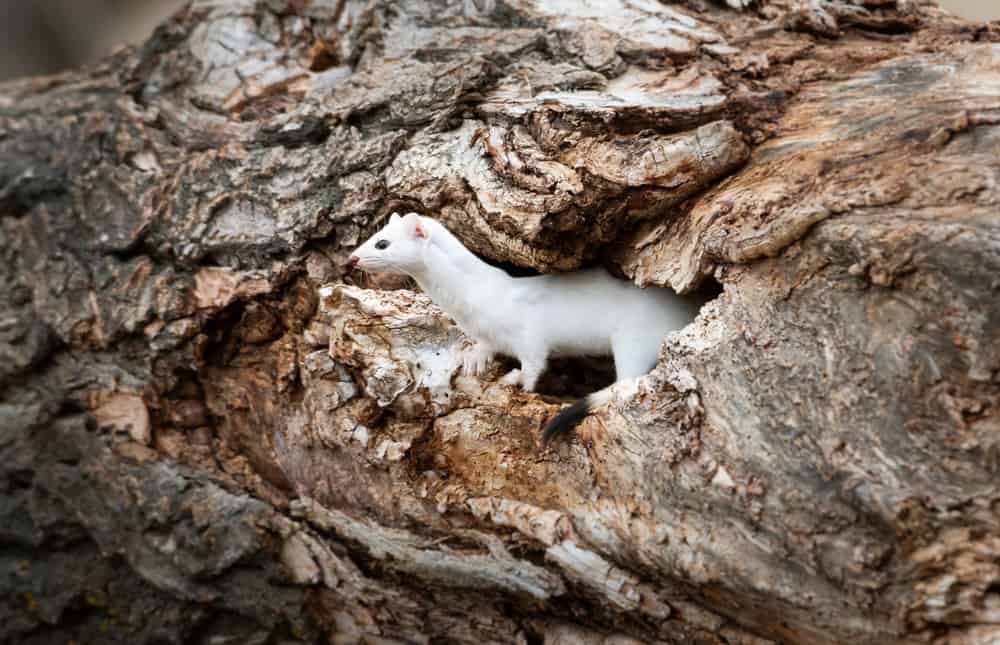
| Scientific Name | Mustela erminea |
| Where It Lives | Asia, Europe, Oceania and North America |
| What It Eats | Small mammals |
| Conservation Status | Least Concern (LC) according to the IUCN Red List |
Fun Fact: The ermine has a luxurious coat of fur, favored by the upper class.
The feisty Ermine lives in woodlands, marshes, shrubby areas, open areas and alpine meadows in Asia, Europe, North America, and Oceania.
The Ermine is a one-of-a-kind weasel whose slender frame belies its fierce nature. This miniature-sized animal is known to take on animals much bigger than itself. Although they are terrestrial animals, they can swim and climb trees – even going down head first the same as squirrels! They use this ability to hide from predators or to find prey. Their strong senses of sight, hearing, touch, and smell aid them in locating prey.
25. Evening Bat
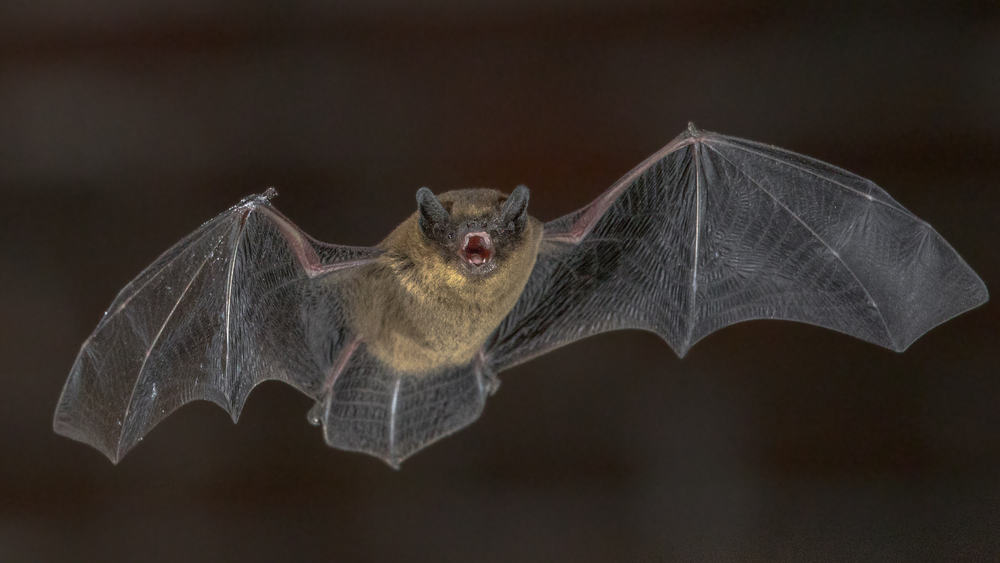
| Scientific Name | Nycticeius humeralis |
| Where It Lives | Native to North America |
| What It Eats | Beetles, moths, flying insects |
| Conservation Status | Least Concern (LC) according to the IUCN Red List |
Fun Fact: It is one of the rare bats that consistently produce twins.
The Evening bat is a rather friendly animal with a small frame native to North America where they live in forests, open fields, and riparian zones.
Evening bats, as their name suggests, hunt during the evenings and rest during the days. These small bats weigh around 0.53 ounces and their forearms are only about 1.3 inches long. Compared to other bats, they have a relatively short lifespan of about 4 years. This could be due to their high reproductive output of up to 4 pups. These are nurtured either by their mother, but in some cases another female.
Summary of animals that start with E
We hope you enjoyed the article on animals that start with E! Have a look at the other Animal Lists here:
- Animals That Start With A
- Animals That Start With B
- Animals That Start With C
- Animals That Start With D
- Animals That Start With F
- Animals That Start With G
- Animals That Start With H
- Animals That Start With I
- Animals That Start With J
- Animals That Start With K
- Animals That Start With L
- Animals That Start With M
- Animals That Start With N
- Animals That Start With O
- Animals That Start With P
- Animals That Start With Q
- Animals That Start With R
- Animals That Start With S
- Animals That Start With T
- Animals That Start With U
- Animals That Start With V
- Animals That Start With W
- Animals That Start With X
- Animals That Start With Y
- Animals That Start With Z
- Animals and Wildlife in Colorado - April 24, 2024
- Best Places to see Sloths - April 24, 2024
- Where to See Alligators in the Wild - April 24, 2024

